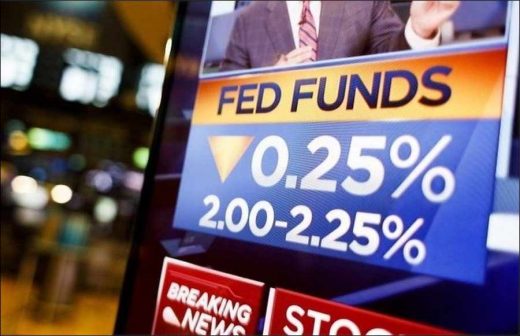This Fed rate-cut surprise may fool everyone. The outlook for Federal Reserve rate cut has divided Wall Street into two main camps. The no-landing camp thinks the higher inflation readings to start the year, solid job growth and a booming S&P 500 will keep the Fed on hold. The group forecasting a soft — or maybe slightly bumpy — landing expects sufficient disinflation progress and emerging signs of a slowdown to allow the Fed to deliver three or more rate cuts this year.
Both groups could be in for a surprise on Wednesday, when the Fed will show its cards with guidance from chair Jerome Powell and updated quarterly projections. Powell may signal that a near-term rate cut could be in the cards, supporting the odds of a June move in something of a surprise for the no-landing camp. Yet Fed projections may pencil in one fewer rate cut in both 2024 and 2025 than they showed in December, surprising soft-landing forecasters.
That may be the best way for the Fed to balance its competing priorities: inoculating the economy against undue weakness from keeping rates too high for too long, while keeping a lid on the exuberance among investors and businesses that a rate-cutting cycle can spark.
The First Fed Rate Cut
Fed chair Powell’s Jan. 31 news conference seemed to hint at policymakers’ discomfort with the rate-cut outlook they offered in December: three quarter-point rate cuts this year and four more in 2025.
Powell stressed that the initial rate cut carries more significance than an ordinary quarter-point move, calling it a “highly consequential decision” that the Fed wants to get right.
Powell didn’t explain why that first cut matters so much. But the implication is that it could send an all-clear signal on inflation and amplify expectations that a series of cuts will follow.
This also may have been on Powell’s mind: In the 11 rate-cutting cycles since 1982, the S&P 500 has averaged a nearly double-digit gain in the six months following the first cut. That includes a 25% surge in the half year after the first rate cut in 1998.
Yet by reeling in its rate-cut outlook at next week’s meeting, the Fed could send a message that subsequent cuts following an initial move won’t be a given. That could give the Fed more leeway for a preventive, near-term quarter-point cut to help assure a soft landing.
Fed Rate-Cut Odds
Going into next week’s Fed meeting, market pricing shows 59% odds of a quarter-point rate cut by the June 12 meeting. Further, markets are pricing in a year-end Fed funds rate of 4.65%. That implies a strong likelihood (65% odds) of at least three quarter-point cuts from the Fed’s current 5.25% to 5.5% range.
The market pricing suggests that, while the Fed rate-cut outlook has split Wall Street into two camps, more money is behind the soft-landing camp. Yet the soft-landing camp may be underestimating the Fed’s concern about easy financial conditions and its reluctance to add fuel to the AI stock boom.
What’s Changed Since Dec. Fed Meeting
One thing seems clear: The Fed has a different set of cards than it held on Dec. 13, when policymakers penciled in 75 basis points in rate cuts for 2024. Since then, GDP and job growth have come in hotter than expected, while the S&P 500 has scored one record high after another.
By the Jan. 30-31 meeting, some Fed policymakers were already getting nervous about too-easy financial conditions, meeting minutes revealed. The risk that the wealth effect from a roaring bull market would boost consumer spending and stall inflation progress likely played a big part in Powell essentially taking a March rate cut off the table. The S&P 500 has tacked on another 5% since Jan. 30, bringing its rally since late October to 25%.
Subsequently, hot January inflation data released last month pretty much torpedoed chances of a Fed rate cut at the May 1 meeting. Still, Powell told Congress on March that cutting interest rates will be appropriate when the Fed gains sufficient confidence — “and we’re not far from it” — that inflation is on a path to get back to 2%.
Views: 114





